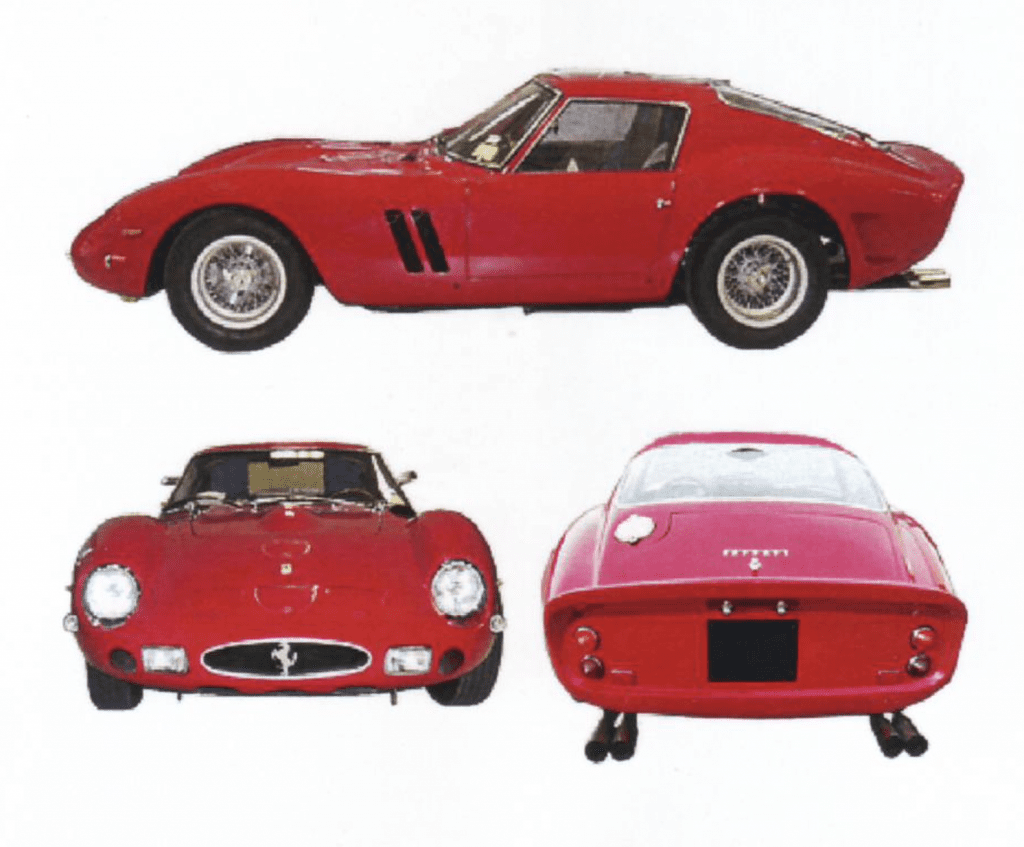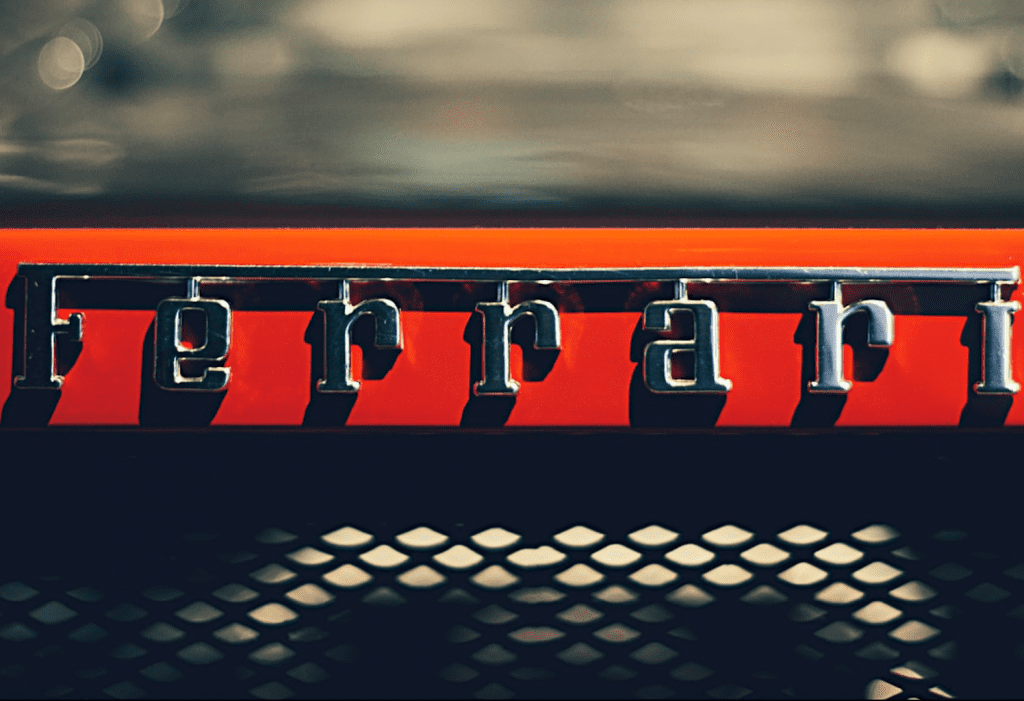The Ferrari 250 GTO holds the title of the “world’s most expensive car.” The 2-door Berlinetta made headlines – and broke previous records – back in 2018 when a rare 1962 model sold for $48.4 million at RM Sotheby’s annual collector car sale in Monterey, California, where the bidding for the prancing horse-adorned automobile started at an eye-popping $35 million. The design of the car is taking on new significance as of late. In a decision last month, the Cancellation Division of the European Union Intellectual Property Office (“EUIPO”) determined that the trademark registration that Ferrari has held for the shape of the famed car since 2008 is no longer entirely valid.
The budding trademark fight over the shape of the 250 GTO – a car that Ferrari produced just 39 of exclusively between 1962 and 1964, and for which the company’s founder Enzo Ferrari personally approved each individual buyer – pits Ferrari against Ares Design, the 8-year old auto company started by its former Senior Vice President Commercial and Brand (and former Group Lotus CEO) Dany Bahar.
The legal back-and-forth between the two Italian automakers got its start in late December 2018 when Ares Design initiated proceedings with the EUIPO. A high performance car customization company in the process of working on a multi-series modern interpretation of the 250 GTO, Ares sought to invalidate Ferrari’s trademark for the source-identifying shape of the 250 GTO. (In the EU, trademarks “consisting of, or extending to, three-dimensional shapes, including containers, packaging, the product itself, or their appearance” are defined and protected as shape marks).
According to Ares, Ferrari had no intention of actually using the shape – with its elongated bonnet, raised bumper, and curvilinear two-door silhouette – when it filed for an EU trademark registration to protect the shape of the car in 2007, some 43 years after it last made such a model. Instead, Ferrari filed the application “in bad faith, namely, as a defensive mark in order to block third parties from producing and selling similarly built sports cars.”
More than that, Ares argued in its initial cancellation filing that Ferrari has failed to use the mark for a continuous five year period, thereby, subjecting the registration (EUTM No. 006543301) to cancellation. The Modena, Italy-based company’s argument is dependent upon the fact that unlike other forms of intellectual property protection, which are limited in duration, trademark rights (and registrations) can last indefinitely provided that the mark – whether it be a wordmark or logo … or the 3D design of a car – are consistently used in commerce.
Registrations “may be cancelled or ‘revoked’ if they have not been used” – in connection with all of the classes of goods/services listed in the registration – “within the five year period following registration, or within any other continuous five year period during the trade mark’s life,” according to Marks & Clerk trademark attorney Jack Kenny. In essence, Kenny says that trademarks are essentially subject to a “use it or lose it” system.

For Ferrari, this means the 250 GTO shape mark, which is defined as the “3D shape” of the iconic sportscar, including its red body and various color accents, must be used across the three classes of goods listed on its registration: clothing (Class 25), “games and playthings,” including model cars (Class 28), and vehicles, themselves (Class 12).
Ares alleges that Ferrari failed in regards to use, thereby, putting its registration at risk and opening itself up to the possibility that other companies – Ares included – can reproduce the Giotto Bizzarrini and Sergio Scaglietti-designed 250 GTO shape without running afoul of the law.
In response to Ares’s bid for cancellation, counsel for Ferrari pushed back, arguing that “all 39 [250 GTO] units produced from 1962 until 1964 … [are] still existing, and that [the car] is recognized as one of the most glorious and iconic Ferrari cars ever created.” While it is “no longer in production,” Ferrari asserted that “the 250 GTO is still in great demand, [and that] the car and corresponding EU trademark have become a symbol of Italian style in the world, making it a way of living and a status symbol.”
Speaking specifically to the use requirements, Ferrari claimed that the “250 GTO is destined for a very restricted market of collectors, celebrities, and super-rich, who can afford to spend millions of Euros to buy such an extra-expensive luxury car.” Against that background, “it will be sufficient to show … at least where Class 12 is concerned, very few sales of the products, of their spare parts, or of the related activities of maintenance, repair and restoration, to fulfill the use requirement.”
Unfortunately for Ferrari, the EUIPO’s Cancellation Division was unpersuaded by that argument about the requisite level of use necessary for the company to maintain its rights in Class 12. The trademark body held in a June 2020 decision that “genuine use of the contested EU trademark has been sufficiently demonstrated … in relation to toy vehicles and scale-model vehicles, [but] no use of the mark or proper reasons for non-use have been demonstrated in relation to any of the other goods for which it is registered,” namely, cars or clothing.
As a result, Classes 12 and 25 have been stricken from its registration as invalid, but Class 28 remains in force. While the Cancellation Division’s decision has certainly proven noteworthy, it is likely not the last word on this, as Ferrari has the ability to appeal.
Regardless of how it fares in this fight, Ferrari – which is not the only big name to have a valuable trademarks challenged due to non-use, adidas’ 3-stripe mark and McDonald’s Big Mac have faced similar issues in the EU – has a couple of pending trademark applications for “Ferrari 250 GTO” for use on an array of goods in addition to an already-existing registration for the mark in Italy for use on everything from clothing to cars. This means that while it may not be able to bar others from replicating the shape of the famous car, it will likely be able to prevent them from using its name – and certainly its instantly-identifiable prancing horse logo – on the car, itself.











